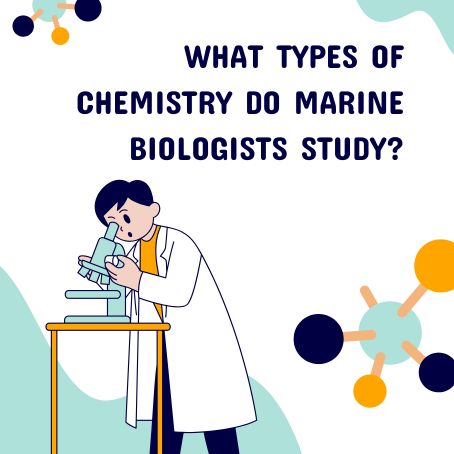To gain more holistic knowledge of the life forms present in each marine ecosystem, marine biologists will undertake numerous forms of livelihood. Among these is chemistry which features prominently in many of the inquiries. While marine chemistry also encompasses oceanography that is focused on physical, historical,
and spatial biological components, it is more diversified to the extent that marine biologists focus on certain parts of chemistry such as The Chemical Structure of Sea Water Furthermore, the aspects that allow life such as the chemical components and structure of seawater will also be a point of focus for them. As an illustration of how such an area is investigated, the concentration of salts,
nutrients, gases, and some important trace elements are determined. Salinity, which is defined as the amount of dissolved salts within a water body, is helpful in the osmoregulation of marine organisms that affect buoyancy and the ocean’s circulation. Besides these processes,
marine biologists also check the concentration of important ions such as sodium, chloride, magnesium, and sulphate and the range of their concentrations in various places. Furthermore, the sources determine the cycle of nitrogen, phosphorus, and silicate which are among the nutrients that are key in marine cycling. This is because phytoplankton, which are the primary producers,
form the base of the marine food web, so knowing the priorities as well as the chemical processes focusing on the location of these nutrients helps in understanding and appreciating the productivity of food webs as well as the impact of anthropogenic activities, especially agriculture run-off on the ecosystem.
Marine Organisms’ Enzyme Systems and Functioning It is also fundamental to comprehend marine organisms and their enzyme systems. In simpler terms, marine biologists are engaged in the observation and documentation of the different metabolic processes that cause marine organisms to create, grow, and reproduce. For instance:
The chemical processes that occur in photosynthetic organisms are of interest to scientists, including how much light or nutrients they need for good photosynthesis.
Sulfur Cycle: In particular, algae and bacteria marine organisms produce sea plants such as Oceanic DMSP-Dimethylsulfoniopropionate,
which are very important for climate regulation because they are precursors of substances that promote cloud formation. Chemical Ecology Chemical ecology defines marine biological processes that are controlled by chemical compounds.
Chemical communication is important in marine environments, determining many activities, reproductive success, and even the life of marine organisms. For example: Pheromones: Chemoreception is extensively applied by numerous marine species to locate their partners, as well as to detect prey and suitable habitats. Allelopathy: The competitive structure of some marine communities is affected by certain algae and corals which possess chemicals that inhibit their competitors’ growth.
Mutually Beneficial Associations:
Noticing such commensal ties as that between coral polyps and microalgae or zooxanthellae in these associations, and considering their chemistries, they are also important for the durability of coral reefs. Sediments and Minerals: Principles and Agents of Chemical Variation Chemical sediments contain valuable information about changes in the environment. In this respect,
marine biologists study sediment chemistry to reconstruct climatic,
biogeochemical cycles and human impacts.
Defence Encased in Chemistry: A number of chemical compounds have, in turn, evolved in a number of marine organisms with a view to ensuring they are not grazed upon by predators, being amongst competitors, and having other organisms parasitising them. Sea slugs, for instance,
take in toxins out of some of their prey as a way of defending themselves, while some corals release substances in order to cope with space competition. Ocean Acidification One topic of growing interest to marine scientists is ocean acidification. It is due to the gaseous CO2 diffusing into the sea to increase the dissolved carbon dioxide in the seawater and, in addition,
lowering the pH value of seawater in the process.
Marine biologists would like to determine the effect of different pHs on the structural biomineralization of calcium carbonate and its precipitation by a range of marine animals,
including some corals, mollusks, and some plankton as well. This is an encouraging level of economic development as it enhances the comprehension of the chemical processes of acidification and its wider level effects on marine life and marine ecosystems.
Toxicology and Pollution Chemistry There continues to be an imminent hazard with respect to the activities conducted in the ocean with harmful substance residue. Marine biologists study the effects of radiological as well as non-radiological pollutants including cadmium, lead, and mercury hydrocarbons following an oil leak,
along with many artificial products such as pesticides and plastic substances. Such emphases include, among others: Bioaccumulation and Biomagnification: These processes explain the transfer and transformation of the chemical pollutant from one trophic level to another;
this implies that an organism higher in the food chain tends to have greater residue concentrations than basal food organisms which have lower concentrations. An important consideration is the mercury content of fish which is ingested by marine mammals and humans. Microplastic Analysis: Microplastics and their additives impact marine food webs at multiple levels. To establish the environmental risks posed by plastic, biologists analyze the type of plastic,
its degradation products, and its physical position. Biogeochemical Cycles As a concept, biogeochemical cycles attract the attention of marine biologists as they determine major elements within the biotic and abiotic parts of an ecosystem. These cycles include: Carbon Cycle: Marine biologists consider processes such as carbon eutrophication of phytoplanktonic origins, making those interactions with carbon and organic carbon marine sediments reservoirs of great interest
Radioactive Elements and Geochemical Signatures Isotopes along with trace elements in marine biology are crucial to understanding the changes that have taken place over a specific duration. For example: Water Tracers: Can be utilised in research regarding the water cycle, concerning the biology, chemistry,
and geology of the sediment. Concentration of Trace Metals: A majority of life in oceans is dependent on iron, manganese, and zinc trace elements microscopically, but too much of them can easily become toxic. Climatic Change and a Chemical Feedback System.
Marine biologists aim to comprehend what other dangers the oceans pose in global environmental change, including the role of elements in oceans in global environmental change. For example:
Life Sciences Within the Scope of Pharmaceutical Chemistry A multitude of biologically active substances that can be related to drugs are available in oceans. So what do marine biologists do?
They collaborate with chemists to evaluate the chemical aspects of marine organisms targeted for the development of drugs. For example, sponges, tunicates, and marine bacteria yield rich bioactive compounds of antibiotics,
anticancer and anti-inflammatory drugs. Conclusion Chemistry is useful in the study of marine biological phenomena such as the knowledge of the ocean and its related puzzles. Marine biologists are interested in the molecular activities of different organisms as well as the molecular chemistry of the ocean. Such investigations require chemistry. In the face of climate change, pollution, and biodiversity loss,
marine biology related to the aspects of chemistry is inestimable.

